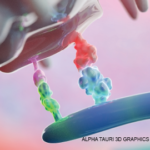Renal injury, uveitis, hematologic abnormalities, hypophysitis, thyroid dysfunction and other autoimmune endocrine abnormalities, such as type 1 diabetes, have also been commonly reported.2-4
The presence of ptosis, respiratory issues, dysphagia, dysphonia and muscle weakness also suggested the possibility of myasthenia gravis. Other reported neurologic irAEs include Guillain-Barré syndrome, encephalopathy, and Bell’s palsy. Interestingly, a case has been reported of a patient with baseline, low-titer positive acetylcholine receptor binding antibody who was treated with nivolumab for melanoma and developed myasthenia gravis.21
Role of Antibodies: The value of antibody testing is important to understand and predict the occurrence of irAEs from ICIs use. In another case, a patient with papillary transitional cell cancer and preexisting anti-striated muscle antibody developed severe polymyositis following treatment with nivolumab and ipilimumab.
These authors concluded that subclinical preexisting autoantibodies predispose patients to develop autoimmune conditions when on ICIs. The relationship between antibody preexistence or formation is an important area of further investigation. This has been difficult to assess, because PD-1 inhibitors are not generally tested in patients who have baseline autoimmune conditions and require immunosuppression. On the other hand, it may be important to screen patients for autoimmune conditions and determine their susceptibility to developing severe irAEs before initiating treatment with ICIs.21-24
Although patients with certain antibodies may be predisposed to develop an irAE from ICI use, this was not the case for our patient or other reported cases. Another case report actually suggested the opposite relationship—a patient with melanoma with no preexisting antibodies was treated with ipilimumab and later developed anti-TSH antibodies and Graves’ opthalmopathy.24 This signifies that there are other underlying immune-mediated mechanisms leading to activation of multiple self-intolerant pathways and manifesting as overlapping autoinflammatory conditions. For example, PD-1 has higher expression in cardiac tissues than in other organs. The basis of why specific organs are affected in certain patients but not in others with the same ICI use needs to be elucidated.14,20,21 Answers to these questions may help screen which patients are candidates for immunotherapy or predict which patients may be at risk for developing an irAE.
Long-Term Treatment & Monitoring
Discontinuation of the drug was not enough for our patient; she experienced cardiac and respiratory compromise. Steroids may have saved her life, but she developed secondary side effects of weight gain and osteoporosis.
No data exist on the appropriate tapering of steroids for irAEs. Some ongoing research suggests the use of immune modulatory medications, such as infliximab, tumor necrosis factor alpha inhibitors, plasmapheresis or intravenous immunoglobulin for the management and long-term suppression of irAEs or to be used alongside ICI therapy to blunt the inflammatory response at the onset. This needs to be further studied for each of the rapidly growing number of ICIs.3,5,25



